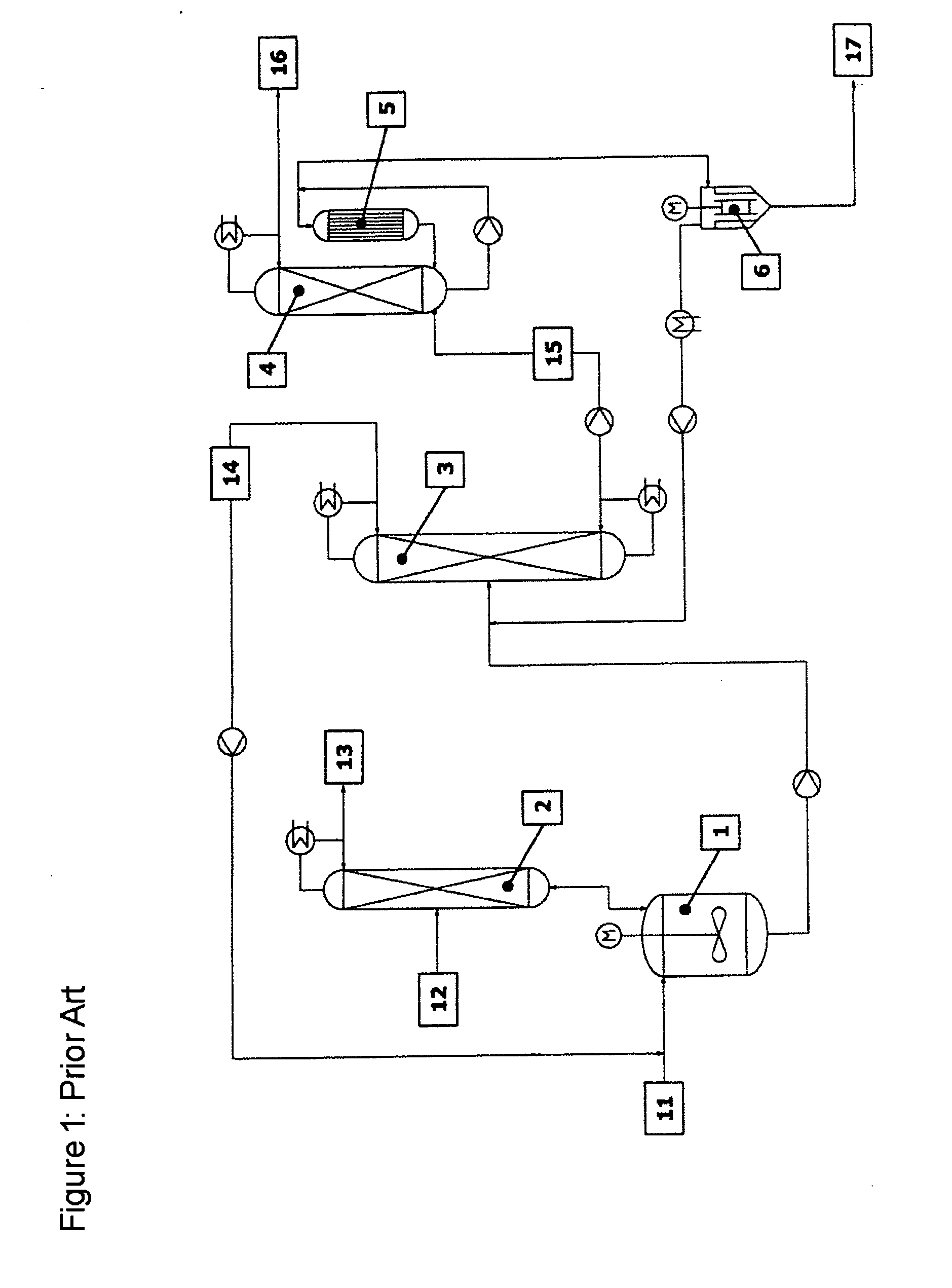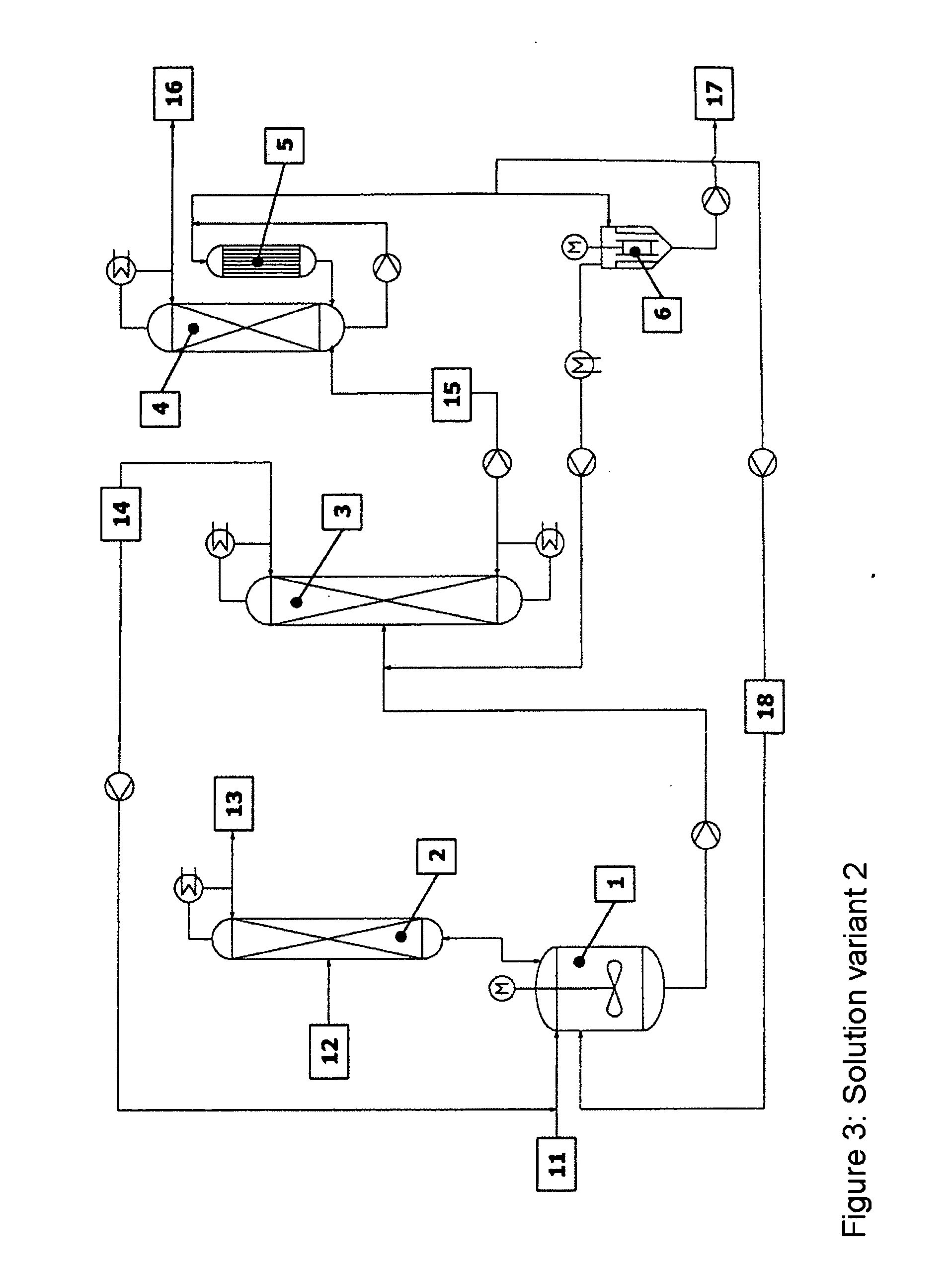Method for the continuous production of alkyl(meth)acrylates with multiple catalyst recycling
a technology of alkyl (meth)acrylates and recycling, which is applied in the preparation of organic compounds, transesterification, and ester-hydroxy reaction. it can solve the problems of increased catalyst requirements, disadvantageous positioning of catalysts in distillation columns, and fouling of column internals
- Summary
- Abstract
- Description
- Claims
- Application Information
AI Technical Summary
Benefits of technology
Problems solved by technology
Method used
Image
Examples
example 2
Complete Recycling of the Catalyst (n-butyl methacrylate Preparation)
[0054] The reaction apparatus (1) used was a steam-heated stainless steel reaction tank having a maximum fill volume of 15 l. The reactor was connected via a vapour line to an azeotrope distillation column (2) mounted above. The azeotrope distillation column (top pressure=1 barabs) was a pilot plant glass column having a diameter D=0.1 m and packed with Sulzer CY structured metal gauze packings of H=2 m. The feed for the reactant alcohol was disposed in the middle of the column (H=1 m). The reactor effluent was fed continuously to a low boiler distillation column (3). This distillation column was a pilot plant vacuum glass column (top pressure=120 mbarabs) having a diameter D=0.1 m and packed with Sulzer CY structured metal gauze packings of H=3.8 m. The feed was at H=2 m. The bottom was heated by means of steam. The condensed top takeoff (cycle stream) (14) was recycled continuously to the reactor. Instead of the...
example 3
Partial Recycling of the Catalyst (i-butyl methacrylate Preparation)
[0056] The reaction apparatus (1) used was a steam-heated stainless steel reaction tank having a maximum fill volume of 15 l. The reactor was connected via a vapour line to an azeotrope distillation column (2) mounted above. The azeotrope distillation column (top pressure=1 barabs) was a pilot plant glass column having a diameter D=0.1 m packed with Sulzer CY structured metal gauze packings of H=2 m. The feed for the reactant alcohol was disposed in the middle of the column (H=1 m). The reactor effluent was fed continuously to a low boiler distillation column (3). This distillation column was a pilot plant vacuum glass column (top pressure=120 mbarabs) having a diameter D=0.1 m packed with Sulzer CY structured metal gauze packings of H=3.8 m. The feed was at H=2 m. The bottom was heated by means of steam. The condensed top takeoff (cycle stream) (14) was recycled continuously to the reactor. Instead of the falling-...
PUM
| Property | Measurement | Unit |
|---|---|---|
| Fraction | aaaaa | aaaaa |
| Percent by mass | aaaaa | aaaaa |
| Percent by mass | aaaaa | aaaaa |
Abstract
Description
Claims
Application Information
 Login to View More
Login to View More - R&D
- Intellectual Property
- Life Sciences
- Materials
- Tech Scout
- Unparalleled Data Quality
- Higher Quality Content
- 60% Fewer Hallucinations
Browse by: Latest US Patents, China's latest patents, Technical Efficacy Thesaurus, Application Domain, Technology Topic, Popular Technical Reports.
© 2025 PatSnap. All rights reserved.Legal|Privacy policy|Modern Slavery Act Transparency Statement|Sitemap|About US| Contact US: help@patsnap.com



